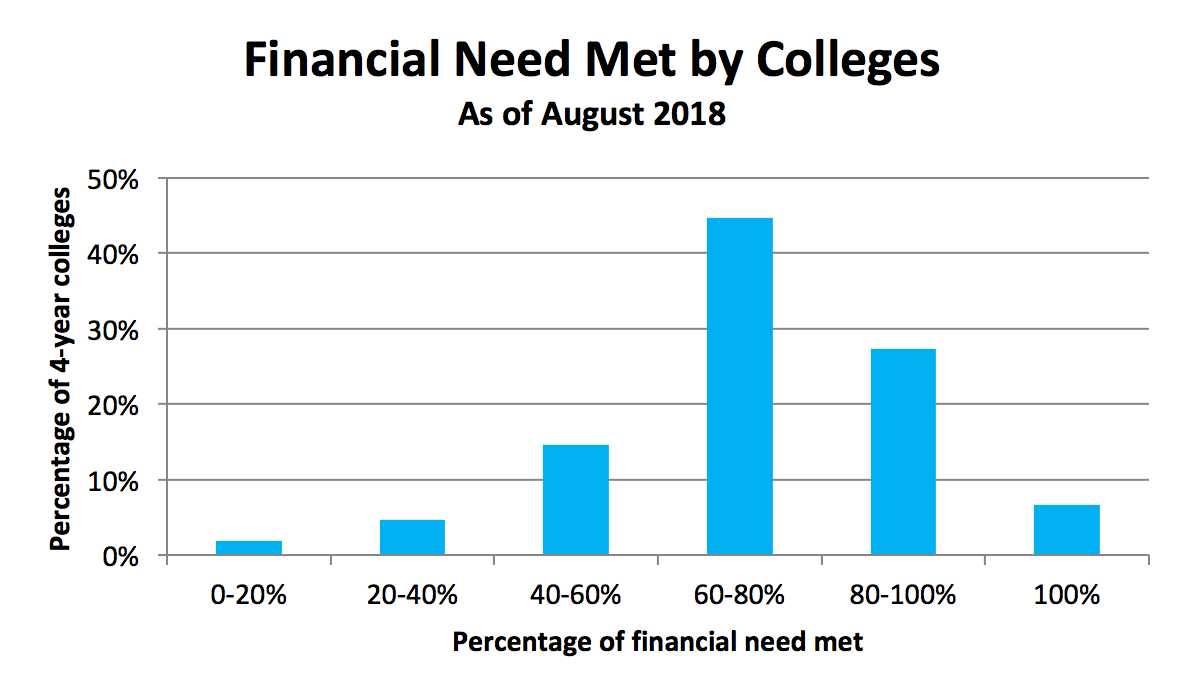5 Key Financial Aid Considerations When Saving for College
Get real about what you might need to pay for your child's education.


Parents of young children see a lot advice about saving for college. Trying to save for the full sticker price can be daunting — even for an in-state public school. For most people, it makes sense to consider how much financial aid your family might receive when developing a savings strategy.
The key is to be realistic. Rules of thumb might be useful, but they could also be inappropriate for your situation. And whatever you do, don’t let the quest for financial aid eligibility deter you from saving.
When factoring financial aid into your estimate of the savings you will need, consider these five points.

Sign up for Kiplinger’s Free E-Newsletters
Profit and prosper with the best of expert advice on investing, taxes, retirement, personal finance and more - straight to your e-mail.
Profit and prosper with the best of expert advice - straight to your e-mail.
1. Colleges probably expect you to pay more than you think you can afford.
The government and most colleges award financial aid based on your FAFSA, the Free Application for Federal Student Aid. Your FAFSA determines your Expected Family Contribution, or EFC. The EFC depends on many factors, but the most important is your family income. If your EFC is less than a college’s cost of attendance, the difference is considered your “need.”
We calculated the EFC for dual-income families of four with one child in college.
For example, a hypothetical family earning $120,000 with $50,000 saved in 529 college savings accounts (or other non-retirement accounts) has an EFC of $24,802. At a private college costing $60,000 per year, this family would have $35,198 of need. At an in-state public college with a $22,000 cost, their need is zero.
For a Family of Four with One Child in College, 2019-20 School Year:
Estimated Expected Family Contribution ($)
| Parents' 2017 Adjusted Gross Income ($) | Total current value of parents' cash andnon-retirement investments ($) | ||||||||
|---|---|---|---|---|---|---|---|---|---|
| - | 25,000 | 50,000 | 75,000 | 100,000 | 125,000 | 150,000 | 175,000 | 200,000 | |
| 60,000 | 4,826 | 5,201 | 5,991 | 6,861 | 7,866 | 8,976 | 10,190 | 11,600 | 13,010 |
| 80,000 | 9,524 | 10,129 | 11,539 | 12,949 | 14,359 | 15,769 | 17,179 | 18,589 | 19,999 |
| 100,000 | 16,413 | 17,118 | 18,528 | 19,938 | 21,348 | 22,758 | 24,168 | 25,578 | 26,988 |
| 120,000 | 22,687 | 23,392 | 24,802 | 26,212 | 27,622 | 29,032 | 30,442 | 31,852 | 33,262 |
| 140,000 | 28,736 | 29,441 | 30,851 | 32,261 | 33,671 | 35,081 | 36,491 | 37,901 | 39,311 |
| 160,000 | 34,785 | 35,490 | 36,900 | 38,310 | 39,720 | 41,130 | 42,540 | 43,950 | 45,360 |
| 180,000 | 40,834 | 41,539 | 42,949 | 44,359 | 45,769 | 47,179 | 48,589 | 49,999 | 51,409 |
| 200,000 | 46,629 | 47,334 | 48,744 | 50,154 | 51,564 | 52,974 | 54,384 | 55,794 | 57,204 |
| 220,000 | 52,396 | 53,101 | 54,511 | 55,921 | 57,331 | 58,741 | 60,151 | 61,561 | 62,971 |
| 240,000 | 58,163 | 58,868 | 60,278 | 61,688 | 63,098 | 64,508 | 65,918 | 67,328 | 68,738 |
| 260,000 | 64,093 | 64,798 | 66,208 | 67,618 | 69,028 | 70,438 | 71,848 | 73,258 | 74,668 |
| 280,000 | 70,025 | 70,730 | 72,140 | 73,550 | 74,960 | 76,370 | 77,780 | 79,190 | 80,600 |
| 300,000 | 75,905 | 76,610 | 78,020 | 79,430 | 80,840 | 82,250 | 83,660 | 85,070 | 86,480 |
The table shows EFC based on family income on the left, and certain assets at the top. Those assets can include cash, stocks, bonds, mutual funds and other investments, as well as the value of real estate other than your primary home and any business ownership. It excludes retirement accounts (such as an IRA or 401(k)), but 529 college savings accounts are included. Assumptions that affect EFC: The older parent is 50 years old as of 12/31/19. The student is a dependent, has $5,000 of assets and has income below $6,500. The family has no non-work income or other assets for FAFSA purposes. The family uses the married filing jointly status and standard deduction for federal income tax and lives in a state with the median FAFSA tax allowance.
Source: T. Rowe Price calculations based on The EFC Formula
A few key takeaways from these calculations:
- The EFC calculation “expects” you to devote a major chunk of your income to college.
- Accumulating more assets doesn’t increase your EFC nearly as much as increasing your income. Some assets are excluded from the calculation--the amount depends on your age — and at most, only 5.64% of additional assets are added to the EFC. Additional income, on the other hand, can increase your EFC by as much as 47%.
For most people, especially high earners, maximizing financial aid is a bad excuse for not saving.
On a happier note, if you have two kids in college at the same time, it can cut your EFC for each by nearly half — but only in years they overlap in college. This is something to consider in your calculations.
2. Even if you have “need,” colleges may not give you that amount of financial aid.
Fewer than 10% of four-year colleges meet 100% of their students’ demonstrated financial need, according to the College Board. Nearly half meet between 60% and 80%. And even at a school that meets a high percentage, it can vary widely from student to student. Be conservative in estimating how much need-based aid your family can receive.

Source: T. Rowe Price calculations based on College Board Big Future college search data
3. That “financial need met” statistic includes loans. That means your aid package is not necessarily “free money” from grants.
Here’s the breakdown of financial aid for undergraduates in 2016-17 from the College Board:
- Grants: 58%
- Federal loans (not including private loans): 32%
- Other: 10%
Loans can be a significant part of the financial aid package, especially for families with significant income. So even if the college offers financial aid equal to your need, your family could still ultimately have to pay more than the EFC.
It’s perfectly reasonable to include loans as part of your college funding strategy. However, we strongly recommend limiting debt to federal student loans, not private loans. For most students, federal loans are currently capped at $27,000 in total for four years of undergraduate education. Parental and private loans generally have less favorable terms and aren’t considered part of the financial aid package.
Don’t assume that saving more will mean you pay more for college. It might just reduce the amount your child can borrow.
4. Your talented child may not receive massive merit or athletic scholarships.
College consultants like to talk about the plethora of scholarship opportunities available from a variety of sources. There certainly are a lot of them, and every bit helps. But many are relatively small compared to the scholarships offered by colleges, which can be very competitive. While some colleges give them as a way to discount tuition, elite schools like the Ivies don’t offer merit scholarships at all. Athletic scholarships are primarily at Division I schools, and for most sports they likely aren’t a full ride.
5. Rely on figures based on your situation instead of hypothetical amounts.
How can you tie all of these factors together and figure out what you should be saving? Good news: There are tools available that can help you estimate the amount you may need to save each month
Using the guidance above to predict your EFC and financial aid potential — and considering your willingness to accept federal loans — can help you input a realistic cost, or percentage of total cost, you’ll need to fund.
To get more specific, another great tool is the online Net Price Calculator (NPC) provided by each college. Just enter your financial data (anonymously, if you wish) and get an estimated financial aid package for that school. This is especially valuable as the college decision approaches before you complete the FAFSA, but parents of younger children can use it to calculate a ballpark estimate. Results from the NPC can then inform your inputs into a savings calculator.
If a calculator suggests what seems to be an unrealistic amount, don’t despair. Save what you can and work toward a plan that enables your child to graduate. When it comes to saving for college, I don’t recall anyone ever telling me they’re unhappy that they saved too much.
Get Kiplinger Today newsletter — free
Profit and prosper with the best of Kiplinger's advice on investing, taxes, retirement, personal finance and much more. Delivered daily. Enter your email in the box and click Sign Me Up.

Roger Young is Vice President and senior financial planner with T. Rowe Price Associates in Owings Mills, Md. Roger draws upon his previous experience as a financial adviser to share practical insights on retirement and personal finance topics of interest to individuals and advisers. He has master's degrees from Carnegie Mellon University and the University of Maryland, as well as a BBA in accounting from Loyola College (Md.).
-
 5 Historic Philadelphia Homes for Sale Now
5 Historic Philadelphia Homes for Sale NowPhiladelphia is a goldmine of historic properties that rival the best in New York, London and Paris for charm and opulence. Here are five gems you can own.
By Charlotte Gorbold
-
 When to Sell Your Stock
When to Sell Your StockKnowing when to sell a stock is a major decision investors must make. While there's no one correct answer, we look at some best practices here.
By Charles Lewis Sizemore, CFA
-
 Within Five Years of Retirement? Five Things to Do Now
Within Five Years of Retirement? Five Things to Do NowIf you're retiring in the next five years, your to-do list should contain some financial planning and, according to current retirees, a few life goals, too.
By Evan T. Beach, CFP®, AWMA®
-
 The Home Stretch: Seven Essential Steps for Pre-Retirees
The Home Stretch: Seven Essential Steps for Pre-RetireesThe decade before retirement is the home stretch in the race to quit work — but there are crucial financial decisions to make before you reach the finish line.
By Mike Dullaghan, AIF®
-
 Three Options for Retirees With Concentrated Stock Positions
Three Options for Retirees With Concentrated Stock PositionsIf a significant chunk of your portfolio is tied up in a single stock, you'll need to make sure it won't disrupt your retirement and legacy goals. Here's how.
By Evan T. Beach, CFP®, AWMA®
-
 Four Reasons It May Be Time to Shop for New Insurance
Four Reasons It May Be Time to Shop for New InsuranceYou may be unhappy with your insurance for any number of reasons, so once you've decided to shop, what is appropriate (or inappropriate) timing?
By Karl Susman, CPCU, LUTCF, CIC, CSFP, CFS, CPIA, AAI-M, PLCS
-
 Before You Invest Like a Politician, Consider This Dilemma
Before You Invest Like a Politician, Consider This DilemmaAs apps that track congressional stock trading become more popular, investors need to take into consideration some caveats.
By Ryan K. Snover, Investment Adviser Representative
-
 How to Put Together Your Personal Net Worth Statement
How to Put Together Your Personal Net Worth StatementNow that tax season is over for most of us, it's the perfect time to organize your assets and liabilities to assess your financial wellness.
By Denise McClain, JD, CPA
-
 Bouncing Back: New Tunes for Millennials Trying to Make It
Bouncing Back: New Tunes for Millennials Trying to Make ItAdele's mournful melodies kick off this generation's financial playlist, but with the right plan, Millennials can finish strong.
By Alvina Lo
-
 Early-Stage Startup Deals: How Do Convertible Notes Work?
Early-Stage Startup Deals: How Do Convertible Notes Work?Some angel investors support early startups by providing a loan in exchange for a convertible note, which includes annual interest and a maturity date.
By Murat Abdrakhmanov